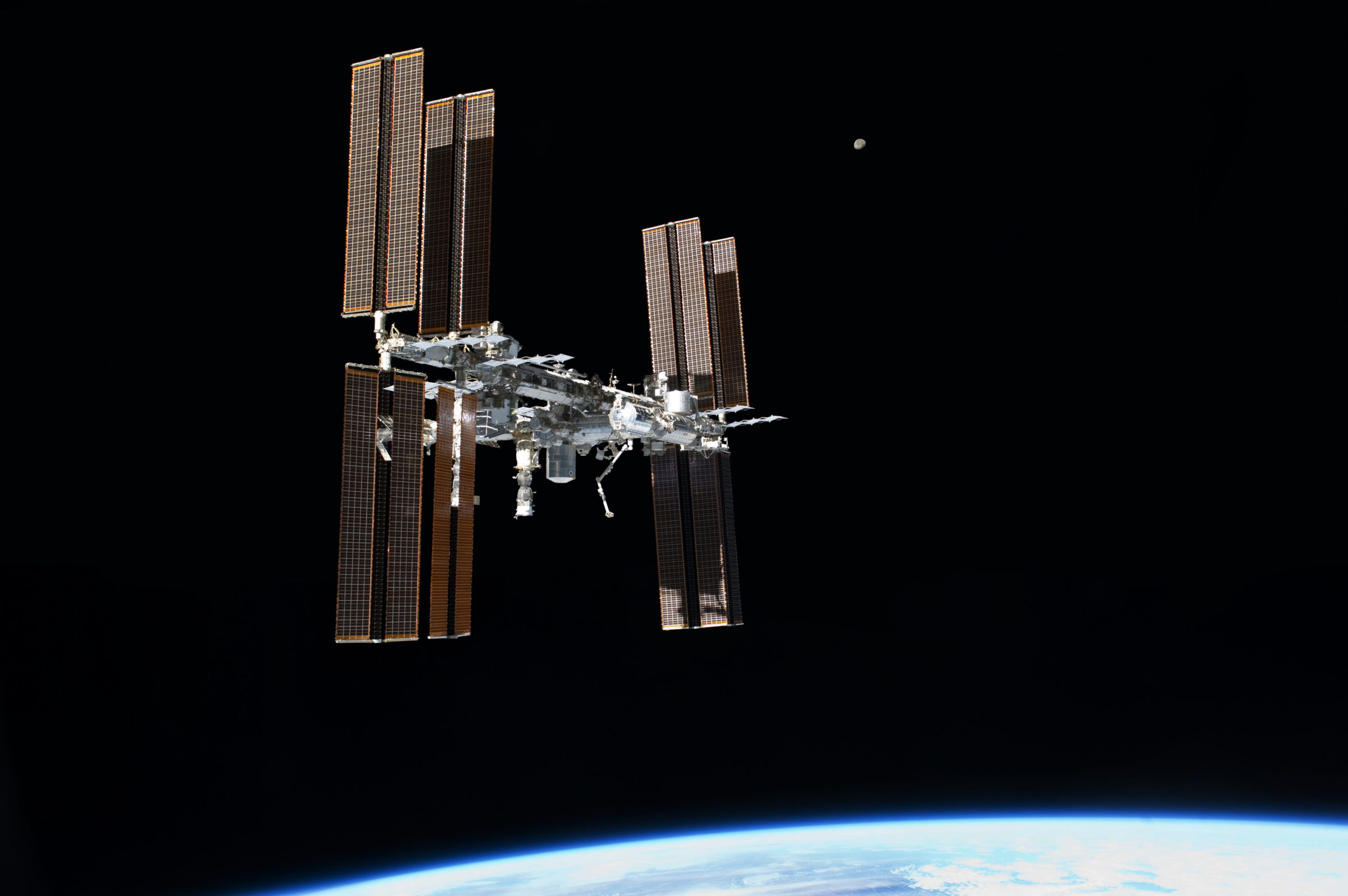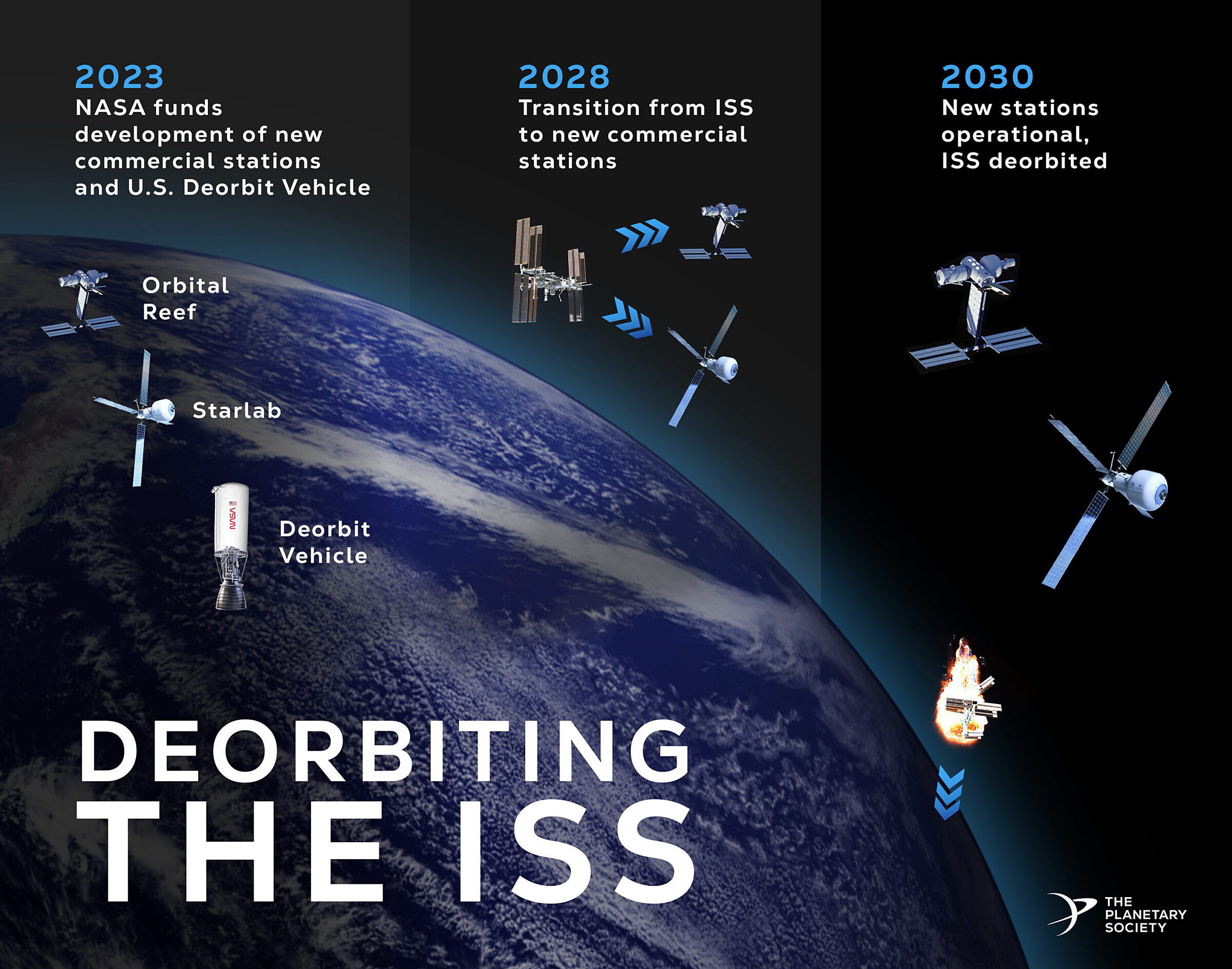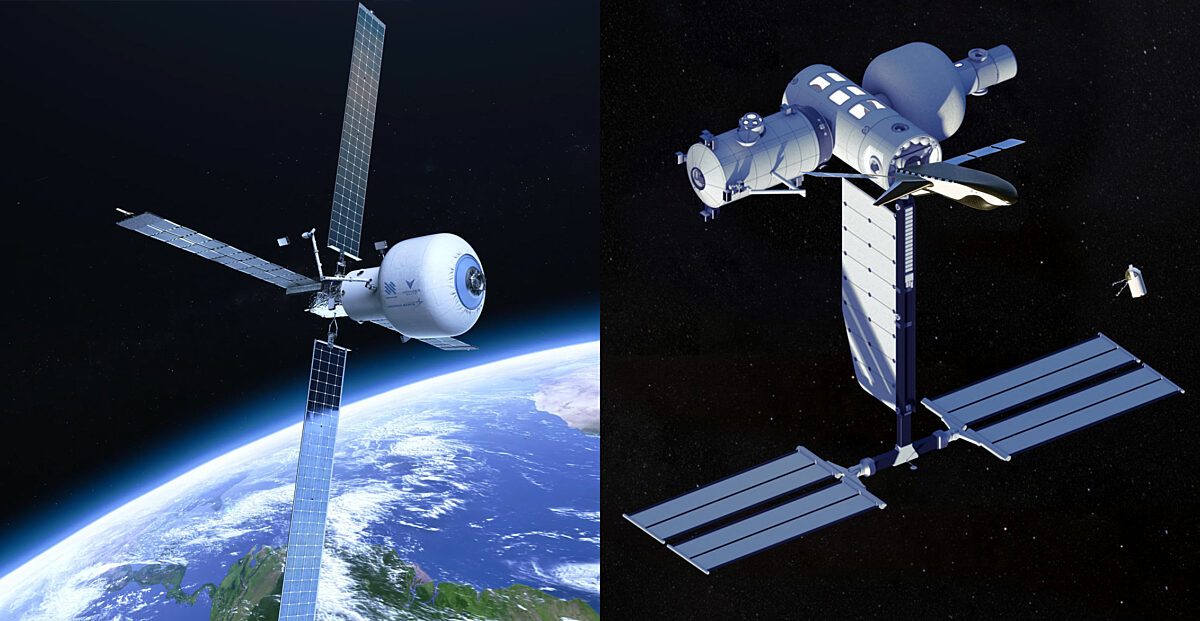Jason Davis • Nov 21, 2023
How NASA plans to deorbit the International Space Station
The International Space Station has been around for a long time. Its first module, Zarya, launched in 1998. Crews have continually staffed the orbital complex since 2000. The ISS has been circling the globe so long that one-fourth of the world’s population has not lived without it.
As ubiquitous with spaceflight as it is, the ISS cannot live forever. Its core structures — specifically its modules, radiators, and central truss — are aging. They weaken under the forces of arriving and departing vehicles, orbital reboosts, and intense hot and cold cycles as the station travels in and out of sunlight each orbit. Radiators have been leaking, and efforts to find and patch air leaks in the Russian Zvezda module are still ongoing.
At the same time, NASA is moving its human spaceflight focus beyond low-Earth orbit. The Artemis program aims to return astronauts to the Moon, a goal that will consume more and more of the agency’s budgetary focus. NASA is hoping to transition its orbital research to new commercially owned space stations starting in 2028, and begin work to dispose of the ISS as soon as 2030. The agency is working with its international partners on the plan, while funding development of commercial stations and a vehicle that will help deorbit the ISS when the time comes.

How will NASA dispose of the ISS?
NASA considered several options for disposing of the ISS. One idea was to boost the station into a “graveyard orbit” higher than 36,000 kilometers (22,000 miles), where it would remain indefinitely. Considering the ISS currently orbits at an altitude near 400 kilometers (250 miles), this idea was deemed impractical and cost-prohibitive.
Another option was taking the station apart and giving away some of the modules. NASA asked the commercial space industry if they wanted any ISS modules for new stations, and didn’t receive any meaningful interest. Just as it took decades of work to assemble the ISS, disassembling it would be time-consuming and costly. Additionally, most of the modules run on outdated 1990s and 2000s-era technologies.
It turns out that the simplest thing to do with the ISS is send it into Earth’s atmosphere, where it will break apart and burn up. This would happen naturally if NASA and its partners abruptly abandoned the station. At its low altitude, the ISS is continually pulled closer to Earth by atmospheric drag. Without intervention, it would reenter the atmosphere within one to two years.
Under normal operations, a Russian Progress cargo spacecraft is usually used to re-boost the station. The gentle push is noticeable by astronauts floating inside:
International Space Station reboost Astronauts aboard the International Space Station slowly float away from the camera during a reboost maneuver by an attached Progress cargo vehicle. The station's altitude drops by about 100 meters (330 feet) each day due to atmospheric drag. The complex must be periodically reboosted to stay in orbit. Portions of the video are sped up by 8 times.Video: ESA
Unfortunately, the station is too big for NASA and its partners to send it tumbling uncontrollably into Earth’s atmosphere. With a mass of 430 metric tons, the station covers the area of an American football field. Some of its components will survive the trip and fall to the surface. The re-entry must be precisely targeted so that surviving pieces splash into a remote region of the Pacific Ocean.
NASA initially studied using Progress vehicles to deorbit the ISS. And while Progress or other vehicles can be used to lower the station’s altitude, NASA concluded that something more robust is needed for the final reentry burn: a dedicated spacecraft with powerful, reliable thrusters that will send the ISS exactly where it needs it to go. The agency is now seeking proposals from the space industry for a spacecraft known as the U.S. Deorbit Vehicle, or USDV.
“It will be a new spacecraft design or modification to an existing spacecraft that must function on its first flight and have sufficient redundancy and anomaly recovery capability to continue the critical deorbit burn,” said the proposal announcement.

Breaking up is hard
The ISS will by far be the largest object ever deorbited. As it enters the atmosphere, air molecules will compress and rub against its surfaces, heating them up. NASA thinks the first components to break apart will be the station’s massive solar arrays, as well as the radiators that help keep the station cool.
Next, the modules are expected to break free from the truss, the station’s backbone that feeds power from the solar arrays. Finally, the truss and modules themselves will break apart. Much of the hardware will vaporize, but some bigger pieces will survive.
NASA will aim them at Point Nemo, a spot in the South Pacific Ocean named after the captain from Jules Verne's “Twenty Thousand Leagues Under the Sea.” Point Nemo is nearly 2,700 kilometers (1,700 miles) from land — one of the most remote places on Earth. This makes it a popular place for spacecraft disposal, from the Soviet-era Mir space station to ISS cargo vehicles.

After the ISS
Before NASA says goodbye to the ISS, it plans to transition its research and astronauts to commercial space stations. Just as the agency turned to private companies like SpaceX for ISS crew and cargo transportation, it wants to become a space station customer rather than an owner.
In January 2020, NASA awarded Axiom Space a contract to attach commercial modules to the International Space Station. The modules are designed to eventually detach into a separate space station. Axiom is currently planning to launch their first segment in 2026.
A year later, NASA signed agreements with three groups of companies who plan to develop freestanding commercial space stations. After one team joined forces with another group, there are two station concepts in the works: Orbital Reef, which aims to be operational in 2027, and Starlab, which is targeting operations for 2028.
There are concerns that these commercial space stations won’t be available for use by 2028. NASA’s Office of Inspector General concluded a commercial station won’t be available until the 2030s, while NASA’s Aerospace Safety Advisory Panel is worried about funding levels for commercial space station development and the USDV.
NASA officials have acknowledged that the timeline may need to change. In the meantime, the ISS remains a busy international science and research hub. With more commercial astronaut missions planned, the orbital complex will likely run at full capacity right up until the moment it is deorbited and sent into history.


 Explore Worlds
Explore Worlds Find Life
Find Life Defend Earth
Defend Earth

